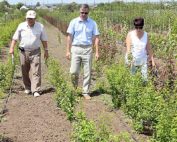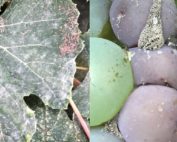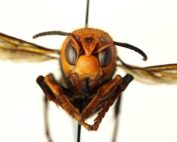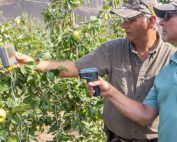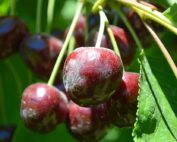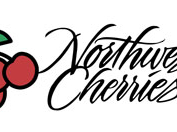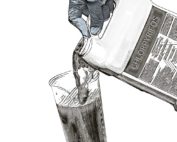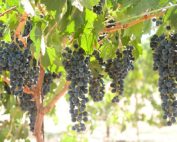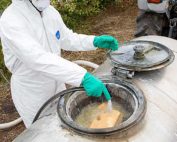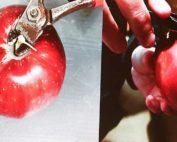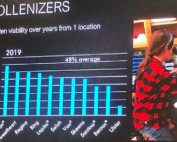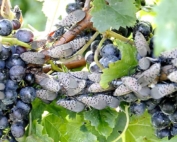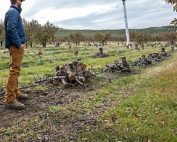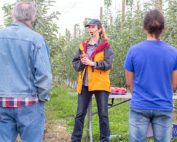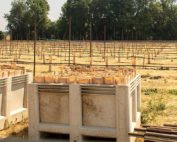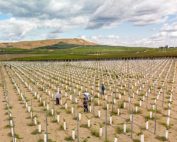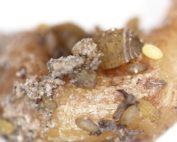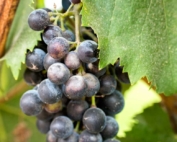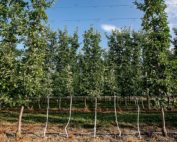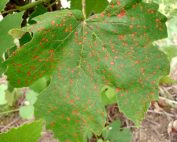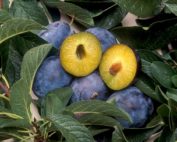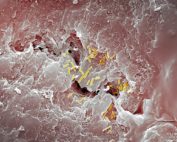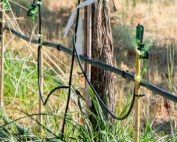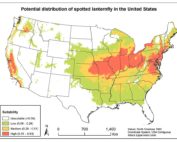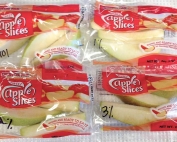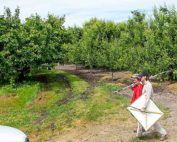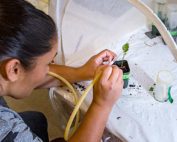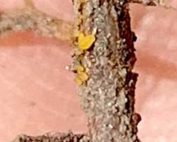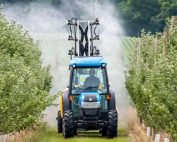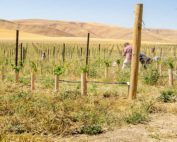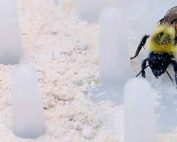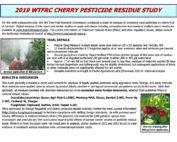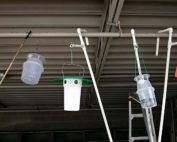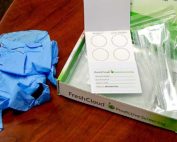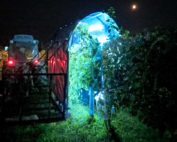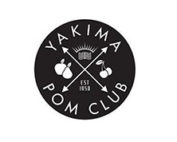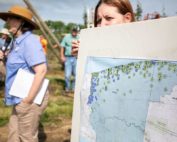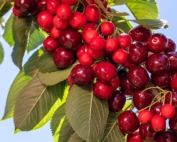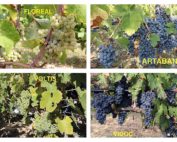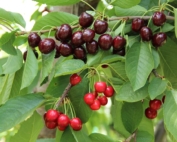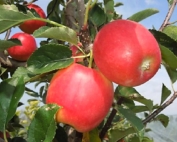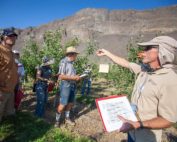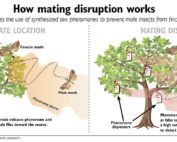ADVERTISEMENT
Rootstocks from Krymsk, Russia, with love
The peach and cherry rootstock program owes its success to a family of breeders taking advantage of their home in the heart of wild Prunus diversity.
Fungicide resistance a growing concern
Michigan grape growers must take steps to manage powdery mildew, botrytis bunch rot.
Beehive-destroying hornet found in Washington
An enormous, invasive hornet that can destroy honeybee hives in “a matter of hours” was
Sun stress has growers sun wary
With sun damage a key factor in cull fruit for the Washington industry, new WSU research aims to better understand the physiology of sun stress.
Hotter climate alters the cold chain
Maturity metrics may not yield the usual results for fruit grown in warmer-than-usual growing seasons.
Good to Know: Risk reduction proven
WSU researchers demonstrate that routine export quarantine sufficiently controls powdery mildew pathogen on fresh sweet cherries.
Wildlife management: Deer, birds and bears, oh my
Wildlife a concern for Northwest Michigan growers.
China ramps up cherries
Presentation about Chinese production increases highlights Cherry Institute.
Growers tracking chemical controversies measure for measure
Concerns rising on whether public opinion undermines science on chemical registration process.
New California wine grape cultivars offer Pierce’s disease resistance
Camminare Noir, one of five new cultivars released by University of California, Davis, in December,
Just add water: Packaged nematodes bred to devour pests — Video
Washington grower tries nematodes to knock down codling moths.
Hort Show sessions end with a Cosmic bang
Final day of the WSTFA Annual Meeting includes in-depth Cosmic Crisp and IPM discussions.
GLEXPO Day 2: Speakers have lots of knowledge to share
Fruit rots, new peach varieties and Ethephon in cherries just a few topics.
Hort Show Day 2 afternoon: Fruit set variability predicted to increase
Other research session cover pollinizers, fire blight and little cherry disease.
GLEXPO Day 1: Spotted lanternfly causing ‘scary, significant economic damage’
Other topics at the Great Lakes EXPO included wildlife management and fungicide resistance in grapes.
X disease devastation strikes Pacific Northwest
Researchers and growers urge aggressive response to epidemic-level infections.
Hanrahan: Looking ahead to the next 50 years
Washington Tree Fruit Research Commission wants industry members engaged in creating their future.
Project aims to reframe the conversation about food and farming
Nonprofit founder will discuss ongoing project about food and farming during Great Lakes EXPO.
Renewed research in the Rogue Valley
Oregon State University Extension plants new vineyards for studies as region’s wine grape acreage continues to grow.
Rootstocks a new reality for Pacific Northwest vineyards
Following phylloxera findings, Washington wine grape growers rooting for information on rootstocks.
Washington vineyards facing phylloxera
Findings prove an unspoken, potential problem is no longer just a possibility, opening the door to management.
Phylloxera, economics highlight the 2019 Washington State Grape Society annual meeting
Identifying and managing phylloxera, a common grape pest that is popping up in Washington, dominated the presentations and displays Thursday at the 2019 annual meeting of the Washington State Grape Society in Grandview. An estimated 255 people attended Day 1 of the two-day gathering, which continues Friday at the Grandview Nazarene Church.
Good to Know: Why some seasons are worse for powdery mildew
Temperature, humidity, solar radiation and other factors combine to create ‘high-pressure’ vintages.
Decline dilemma: No easy answer for rapid apple decline
Eastern apple growers report a rise in sudden collapse of seemingly healthy young dwarf trees, but is it a new problem or just highly stressed orchards felled by regular foes such as winter injury and drought?
11 tips to beat grape fungal diseases
Fruit pathologist offers helpful advice for grape growers.
USDA declares United States free from plum pox
No other country has successfully eradicated the stone fruit disease.
Surfactants aid deep cleaning in microcracks
WSU researchers find surfactants help sanitizers clean inside apple skin microcracks.
Spray, without the sprayer
Taking air out of the equation reduces drift, optimizes coverage and efficiency.
Spotted lanternfly map shows high risk for West Coast wine regions
The invasive pest could find plenty of suitable habitat across the U.S., according to new USDA model.
Mattheis: 1-MCP research a fruitful endeavor
USDA-ARS Tree Fruit Research Laboratory in Wenatchee, Washington, was key in implementing 1-MCP technology for the tree fruit industry.
Study tracks effect of pest management in adjacent crops
Entomologist studies the connection between pear IPM and neighboring cherry orchards.
Sugar substitute keeps pounds and pests at bay
Researcher determines sugar substitute erythritol is toxic to pear psylla.
WSDA seeks phylloxera sampling volunteers
Following reports in the Walla Walla Valley, agency plans to sample for the pest in major grape growing regions in Eastern Washington this fall.
Spray specialist promotes crop-adapted approach
IFTA tour stop highlights basics of crop-adapted spraying approach and benefits to apple growers.
Phylloxera detection in Walla Walla means growers wary of soil movement during harvest
Heading into harvest, wine grape growers in Walla Walla, Washington, face a new complication: phylloxera has been found in several area vineyards.
U.S. EPA approves bee-delivered fungicide
Bee Vectoring Technology receives approval for first plant protection product applied by bees.
2019 cherry pesticide residue report now available
Annual report from the Washington Tree Fruit Research Commission helps inform pest management decisions.
Fatal attraction
New lures for female codling moths could provide the basis of mass trapping pest control program for organic growers.
Revealing risks with RNA
Testing biomarkers in Honeycrisp at harvest can estimate chances of storage disorders and inform marketing decisions.
A shot in the dark
Nighttime applications of ultraviolet light show promise for powdery mildew control.
Cherry disease experts will address Yakima POM Club
An upcoming Yakima POM Club meeting will feature two leading researchers in the plight against
Food safety first
New Borton Fruit facility, designed from ground up with food safety in mind, expected to reduce risks and costs.
Invasive fruit fly shuts down some cherry harvest in Western New York
Margaret Kelly, left, shows an updated map showing 2019 trap findings of European cherry fruit
Growers raise the alarm on postharvest pest control for little cherry disease vectors
As the cherry harvest wraps up, growers in Central Washington should launch their leafhopper control
Giving tradition a nudge in the vineyard
New generation of disease-resistant grapes are showing signs of increased acceptance in Europe.
Clean Plant Center Northwest offers low-cost little cherry disease testing
Thanks to the support of the Washington Tree Fruit Research Commission, the Virus Diagnostic Laboratory
Bee-based biocontrol – Video
New technology that uses bees to deliver biocontrol exactly where it’s needed could help organic blueberry growers fight mummy berry.
Hot new varieties for hot climates
Pome fruit breeding partnership between Spain and New Zealand produces new cultivars that will help the industry adapt to climate change.
Organic community honors David Granatstein
Retired sustainable agriculture specialist recognized for 30-year career at WSU.
Good to Know: The disruption eruption
Washington Tree Fruit Research Commission funding codling moth mating disruption for 30 years.

